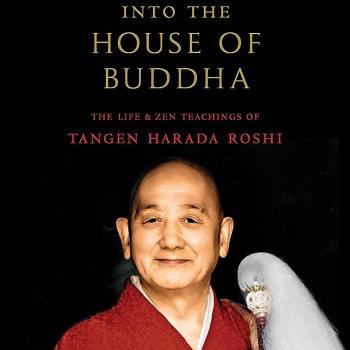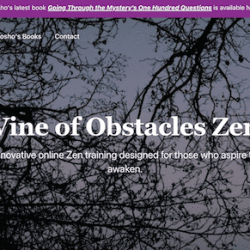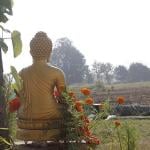Sitting at a bar and catching up with my brother last night, it struck me again how important is our basic stance. My brother and I have very similar bodies and as we age we seem to have lots of the same aches and pains in our backs and knees. How we hold our bodies, however, is quite different. My brother, influenced by studying and teaching law, holds his shoulders uptight, slouches a bit in the mid back and leans in squinting to make a point. As for me, I’m told by the teenagers that I work with that I look like I’ve spent years in the military (but when we just meet they often think I’m po-po [police]). Maybe the difference with my brother from my side comes from Zen practice.
I think any teacher can see their student’s stances, for example, in the subtle quality of their zazen posture or how they present in the first moment of dokusan. Seems to me that there are many variables moving quietly that influence our stance. Here are a few specific for the Zen teacher: authenticity vs. popularity, serving dharma vs. sangha, explaining Zen vs. providing the antecedents for discovery. I’m sensing that this could be the basis for a much longer piece … but for now a bit more about stances and then I’ll pick up this theme in future posts.
A word of caution to myself from Mark Twain here about generalizations, “All generalizations are false, including this one.” I found that while checking my memory about another Mark Twain-ism: “There are two kinds of people: those that think there are two kinds and those that don’t.”
Of course there are many different types of Zen teachers as well as Zen students – and that’s a good thing. How we become who we become has to do with our choices, of course, and the deep currents of life which we can only sense in the periphery. These choices and the deep currents come together in our present stance.
We can criticize and get narrowly self righteous about our differences or look and learn from each other, appreciating the karma that is presenting vividly. Of course, it’s fun to criticize and get self righteous from time-to-time too. Nevertheless, these priests are all disciples of the Buddha in the stream of Dogen and they are delightfully unique.
Clearly, our choices make a difference and often become more apparent in the long run. Recently, I’ve been thinking about vow (a stance for our immediate choices) and the multi generational impacts. Maezumi-roshi, I’m told, had a vow to transmit the dharma as widely as possible. Katagiri-roshi seemed more focussed on transmitting to just one person. Some of Maezumi’s successors have taken on his vow and we can see the impacts on the cover of the Rolling Stone – or at least Tricycle (a little while back). Daido, Bernie, Genpo, and Joko especially have made major contributions to American Zen. Meanwhile, Katagiri’s successors have accomplished much less, on the surface at least.
I think of a metaphor Katagiri-roshi liked to use: life is like being on a boat on a big river and we have the tiller in out hands. The vastness of the river and the current carrying us along are very important variables. Another is the tiller in our hands. Within vastness and the unfolding circumstance of life we have some capacity for choice. No matter how skillfully we use the tiller, however, sooner or later, cancer or just old age will pop up like deadheads, blindsiding our little boat.
In the meantime, the river might not flow as rapidly as we want. I’m dealing with this frustration now (one of my basic stances) in terms of my day job and my commitment to Katagiri-roshi to transmit the dharma (or rather to protect that which cannot be transmitted).
Yet this morning I’m inspired by this, also from Mark Twain, “I was seldom able to see an opportunity until it had ceased to be one.”












